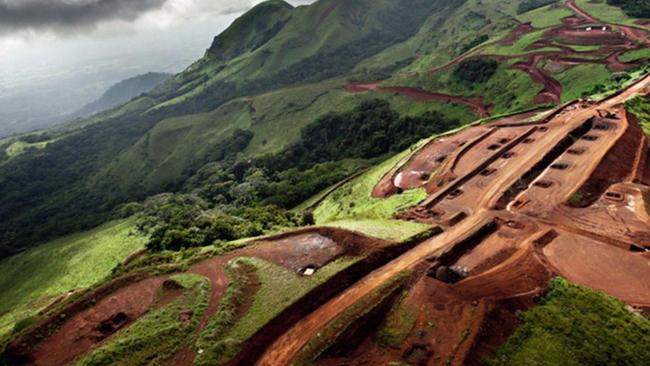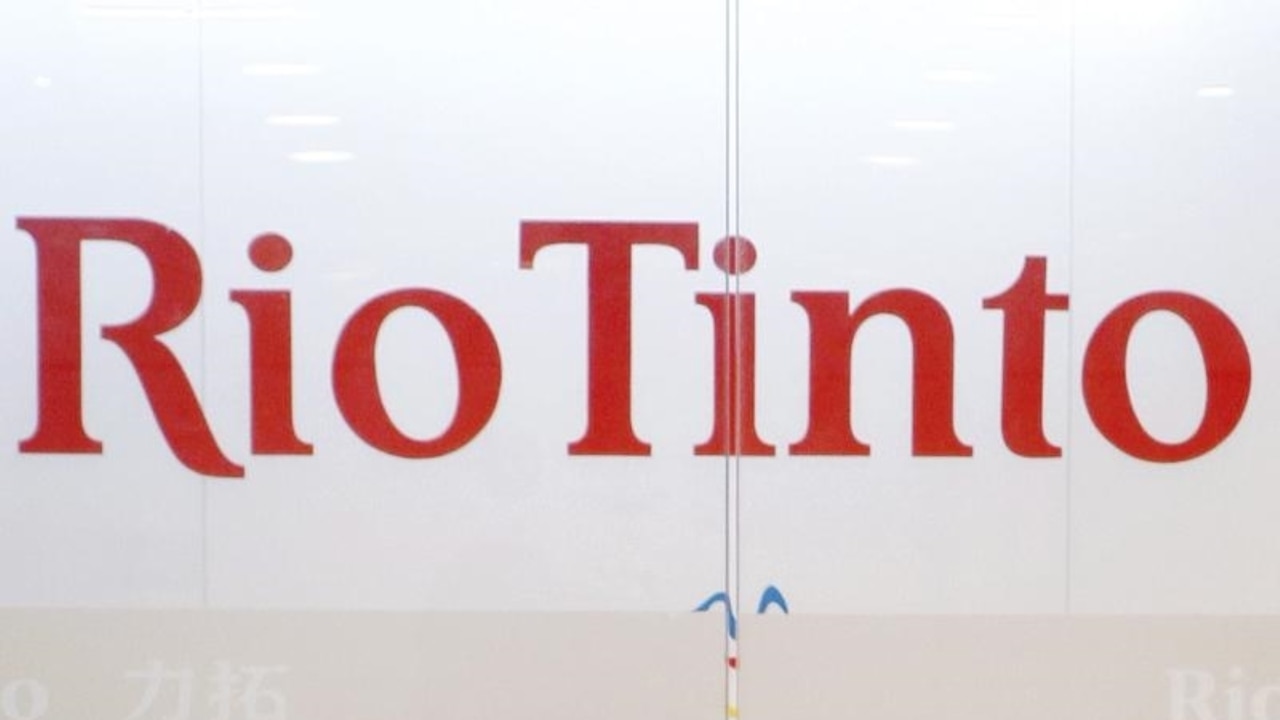Rio Tinto dials back spend on Pilbara decarbonisation; Simandou to cost it $US6.2bn
Rio Tinto is pulling back its plans to install renewable energy generation servicing its Pilbara iron ore mines, as it finally put a figure on its spending on the giant Simandou project.

Rio Tinto has flagged a pull back in its plans to install renewable energy generation servicing its Pilbara iron ore mines, as the company finally put a figure on its spending on the giant Simandou mine in Guinea.
Rio on Wednesday cut guidance for spending on its decarbonisation plans by up to $US2.5bn by the end of the decade, saying it is now likely to spend $US5 to $US6bn in new capital on decarbonisation, down from the $US7.5bn flagged in 2021.
The Australian revealed in July that Rio was considering a major shift in strategy in the Pilbara, and chief technical officer Mark Davies flagged a slowdown in the company’s activities in the Pilbara – largely driven by the company’s belief it cannot replace its diesel trucking fleet with electric battery equivalents before 2030.
“In the Pilbara, we remain committed to building a gigawatt of renewable energy capacity,” he said.
“However, due to the extended timeline of the deployment of battery electric haulage solutions, we now estimate that only 600 to 700 megawatts of capacity is required by 2030.”
The comments come after Rio warned in July that its short-term plans are already in deep trouble, however, with the company saying its June quarter production report it was unlikely to hit its 2025 goal of cutting scope 1 and 2 emissions by 15 per cent by 2025 due to tight global supply chains and delayed approvals.
But while decarbonisation spending plans have softened, Rio is accelerating its spending on growth options, led by the Simandou iron ore project in Guinea.
Rio Tinto finally put a price on the Simandou on Wednesday, saying its share of the development will cost the mining giant $US6.2bn, as the project takes shape as a 120 million tonne a year export operation.
For decades Simandou was billed as the “Pilbara killer”, the best undeveloped iron ore deposit in the world that would eventually undermine Australia’s biggest export earner.
But Rio Tinto chief executive Jakob Stausholm played down that prospect on Thursday, ahead of the company’s annual investor day presentation, telling journalists he did not believe developing the mine would undercut Rio’s Australian iron ore business, the company’s most profitable division.
“It is 120 million tonnes – which should be seen in the light of the global seaborne iron ore market of 1.9 billion tonnes. So it’s 5 per cent of the global market – that will come on stream some years from now,” he said.

Mr Stausholm said the grade of the ore from Simandou suggested the mine’s entry to the global market would pose more of a threat to Vale’s Brazilian sales than to Pilbara exports.
“It’s a different product than in the Pilbara. This is the highest grade iron ore on the planet that can be bought directly – and the only product that it goes in competition with is the iron ore from northern Brazil,” he said.
Rio said on Thursday its half of the deposit – which Rio owns with Chinese metals giant Chinalco in its Simfer joint venture – will export about 60 million tonnes a year of high grade iron ore when the project is complete.
The second half of Simandou is owned by a consortium of Chinese state-owned companies and Singapore’s Winning International group. The government of Guinea owns 15 per cent of the project.
Mr Stausholm said there were no plans for future expansion of Simandou, saying the lack of a deep water port in Guinea put a limit on the export capacity of the country’s iron ore and bauxite mines.
“The bottleneck is on the port side and it is currently not possible. Of course, you can never say never, but it’s pretty fixed capacity at the port,” he said.
Simfer’s half of Simandou will cost $US11.6bn, Rio said on Wednesday.
Under the agreement with the Guinean government, the port and rail infrastructure will transferred to separate joint venture company when it is complete – owned equally by Simfer and the Winning consortium, with the Guinean government owning 15 per cent.
With a cost now put on Simandou, Rio updated its capital spending guidance for the medium term, saying it expects to spend $US10bn a year until 2026. About $US3bn of that spending is earmarked for growth projects, including Simandou.
Chief financial officer Peter Cunningham told reporters on Wednesday he did not expect Rio’s capital spending plans to weigh on shareholder returns, saying the company had consistently maintained dividend delivery towards the top end of its target payout ratio.





To join the conversation, please log in. Don't have an account? Register
Join the conversation, you are commenting as Logout